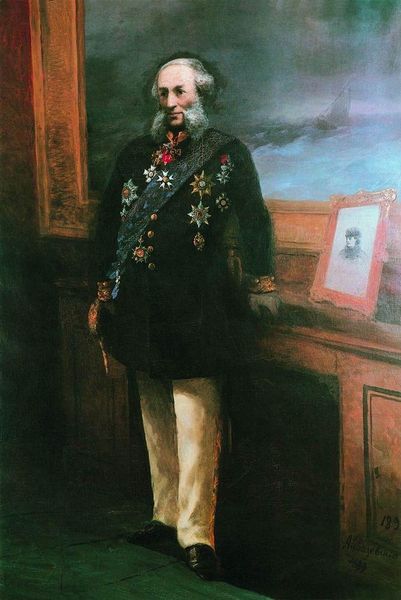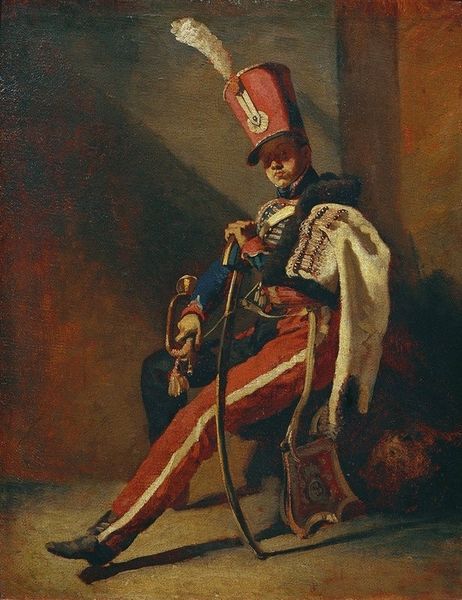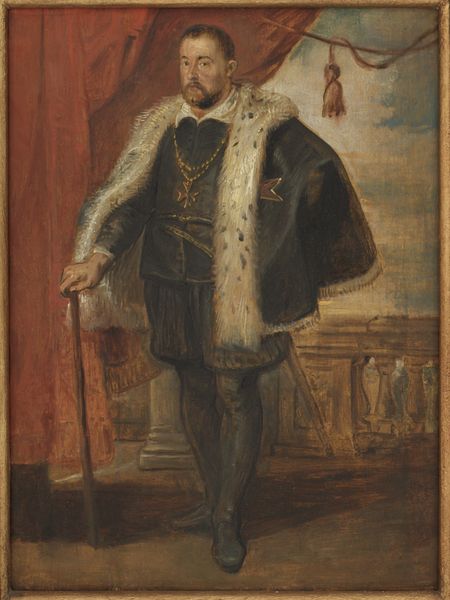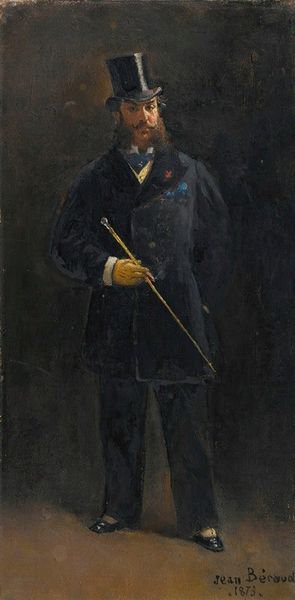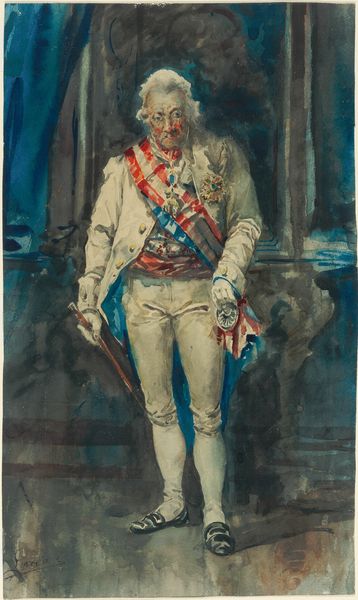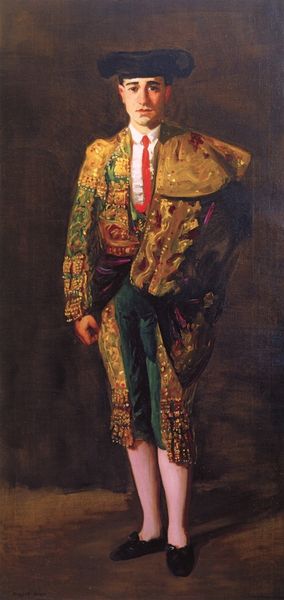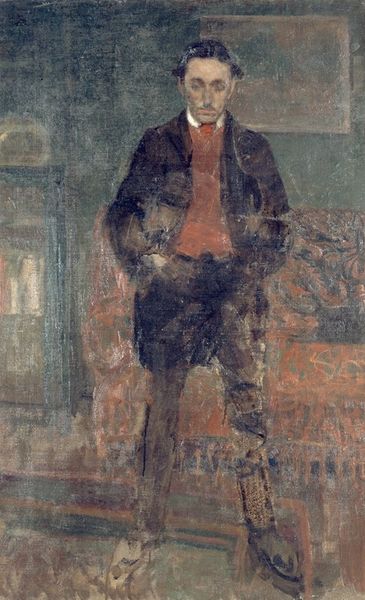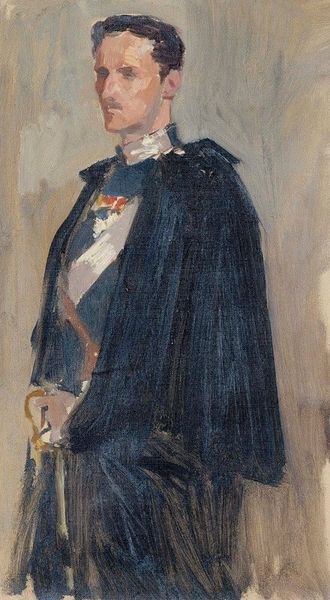
oil-paint
#
portrait
#
oil-paint
#
oil painting
#
history-painting
#
academic-art
#
italian-renaissance
#
italy
#
realism
Copyright: Public domain
Curator: This is Vincenzo Migliaro's "Portrait of H.M. King Umberto I of Savoy," painted in 1878. Editor: Oh, he certainly has that "weight of the crown" look, doesn't he? Melancholy almost. And those colors—dusky reds and greens, muted gold—it's regal, sure, but tinged with something… heavier. Curator: I agree. There's a formality to the piece typical of academic art, reflecting a moment of great political upheaval and consolidation of power in Italy, after the Risorgimento. But that melancholy... it hints at the burdens of leadership, doesn't it? Umberto I, remember, lived during a tumultuous period. Editor: Absolutely. The late 19th century in Italy saw growing social unrest. Looking closer, Migliaro captures Umberto in full regalia, but his face is soft, human. The painting, perhaps unintentionally, presents a complex figure caught between inherited authority and mounting social pressures. Think about how this relates to contemporary anxieties about leadership and power. Curator: You’re right, it does. The painter seems aware of that tension. What’s interesting to me, though, is the handling of the oil paint, almost impressionistic in its looseness. A contrast with the stiffness inherent in portraiture. It allows a glimpse beyond the official image. What does that suggest to you? Editor: To me, it's about suggesting a certain degree of... impermanence. It suggests that power is fragile, identities can be fluid, that these institutions are constructs… Look at the sketch-like treatment of the chair he’s standing in front of: blurred almost, fading into that background! Curator: Precisely. So it’s about more than just historical documentation. It's a painting about transition, the shifting ground beneath even a king's feet. Editor: Migliaro captures a crucial juncture. He prompts us to consider who these people were behind those ornate official portraits, but also, where are we now with these kinds of figures of power. How complicit we are in their rise, how much power should one person really hold? Curator: I feel that by delving into the artwork and understanding its context, our conversation makes it a piece for everyone to engage with, not just art historians.
Comments
No comments
Be the first to comment and join the conversation on the ultimate creative platform.

